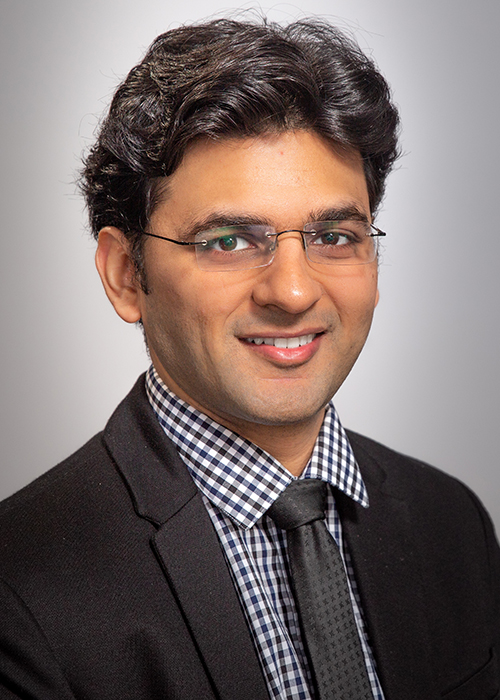Preparing for Disaster: UNM Hospital Participates in Region-Wide Emergency Training

Remote Diagnosis
UNM ACCESS Program Brings Stroke Care Expertise to Rural New Mexico
Neurologists who treat stroke patients have a saying: Time is brain.
It highlights the need to start treatment immediately, because for every minute that the brain’s blood flow is disrupted, about two million neurons die. But as many as one-third of Americans live more than an hour from a primary stroke center – and the problem is even worse for those living in rural New Mexico.
The University of New Mexico Health Sciences decided to tackle the problem in 2015 when it launched the Access to Critical Cerebral Emergency Support Services (ACCESS) program, funded by a three-year grant from the Centers for Medicare and Medicaid Services.
ACCESS offers doctors in rural communities an instant consultation with specialists at UNM Hospital via video links, says Tarun Girotra, MD, an assistant professor in the UNM Department of Neurology who was appointed the ACCESS program’s medical director just before the start of the SARS-CoV-2 pandemic.
“Studies have shown it’s a safe and effective way to do stroke evaluation,” Girotra says. UNM doctors review neuroimaging and laboratory testing results to quickly evaluate whether a patient can safely remain at a local hospital and receive treatment with TPA – a clot-dissolving drug – or whether they should be airlifted to UNMH for a procedure to mechanically retrieve a clot from the brain using a catheter.

It’s reassuring for people to be aware that no matter where you are in New Mexico, UNM still has a presence.
The self-sustaining program currently partners with 22 New Mexico hospitals and UNM Sandoval Regional Medical Center, Girotra says. It averages about 250 consults per month (although the numbers dropped during the early months of the pandemic because some people with less-severe stroke symptoms avoided going to the emergency room).
Each member hospital is equipped with several carts containing videoconferencing and data transfer capabilities. A cart can be wheeled to a patient’s bedside, where a call can be placed directly to the on-call UNM specialist, who can review the case from a laptop, tablet or even a mobile phone.
The program has seen more than 10,000 consults over the past six years, Girotra says, and it has saved patients and their insurers millions of dollars by avoiding needless emergency air transports to Albuquerque. It also allows patients to stay near loved ones in their local hospitals – whose bottom lines also benefit.
The program has also boosted the use of TPA, which must be administered in a window of three to four hours from the onset of stroke symptoms. A rapid assessment by a stroke specialist means that the drug can be administered sooner, he says.
The ACCESS program works hand in glove with a multidisciplinary team of neurologists, neurosurgeons, radiologists at the UNM Comprehensive Stroke Center. “It’s reassuring for people to be aware that no matter where you are in New Mexico, UNM still has a presence,” Girotra says. “We can immediately see them and arrange for them to be transferred to Albuquerque.”
Going forward, the ACCESS program hopes to further improve stroke treatment by implementing artificial intelligence technology that can “read” a CT scan and determine whether a large blood vessel in the brain has been blocked. The system would automatically notify UNMH doctors, even before the consult has taken place, Girotra says.
The ACCESS program has also been providing stroke education for its member partners, including quarterly continuing medical education offerings and seminars with lead nursing staff.
“We’ve heard from physicians and hospitals how happy they are, Girotra says. “It makes their lives easier.”
ACCESS is also playing a role in improving the prospects for stroke patients in New Mexico, he says. “There’s no reason for New Mexico to lag behind in stroke. We are a comprehensive center now. We have this pretty robust tool already. We are going to be a pretty important player in stroke care.”